|
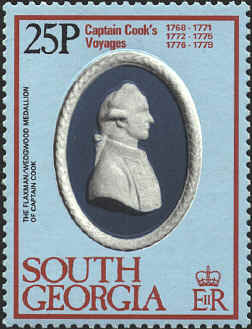
James
Cook was born 27 October 1728 in Marton-in-Cleveland, Yorkshire. In
1746 he was apprenticed to John Walker of Whitby a ship owner, and at
21 was rated able seaman. In 1755 he was in command of a ship. He
volunteered as an able seaman in the Royal Navy and rose in the ranks
to master of HMS Pembroke 1757. During the Seven Year’s War between
France and Great Britain he commanded a captured ship and took part in
the siege of Louisburg in Nova Scotia and the assault against Quebec.
From 1763-1768 he commanded the schooner Grenville while surveying the
coast of Newfoundland.
From 1768 to 1776 Cook made three voyages of
exploration and discovery for the Royal Society.
The First Voyage 1768-1771
Edmund
Halley proposed to determine the parallax (the apparent shift in the
position of an object when observed from different places) of Venus by
using the passage of Venus across the face of the Sun. This would, in
turn, make it possible to determine the distance between the earth and
the sun. Halley’s proposal was that the exact moments of ingress and
egress would be determined at several widely separated observatories
to determine the duration of the transit, and then calculate the
angular separation between the various observatories, and finally, the
distance between the earth and sun required by the resulting parallax.
Since the transit in 1769 would be visible only in the
Pacific Ocean the Royal Society determined to send an expedition under
the command of Captain James Cook to observe the transit from the
island of Otaheite in the South Pacific. They left England on July 30,
1768 on the bark Endeavour and arrived at Tahiti on April 15,
1769.
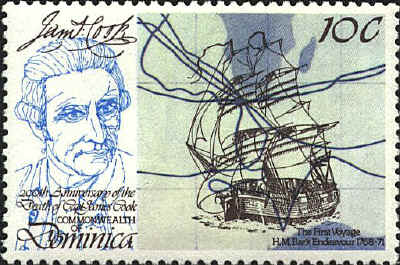
As they
prepared for the observation their quadrant, the instrument by which
the transit was to be measured was stolen and dismantled by the
native. However, it was recovered and reassembled just in time for the
transit. The last two weeks before the even the sky was overcast and
heavy rain fell. But on June 3 the weather cleared and the necessary
observations were made.
The map in the design of the Norfolk Island stamp is
not an old map, but a contemporary one drawn in the manner of older
maps with unknown areas. identified. Regions unexplored at the time of
the event are marked unknown. Areas discovered or mapped by Cook are
shaded dark. The eastern coast line of North America is strangely
shaped and Florida is missing, though it was known at the time.
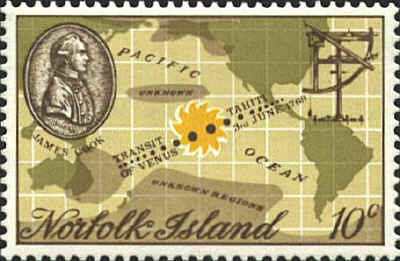
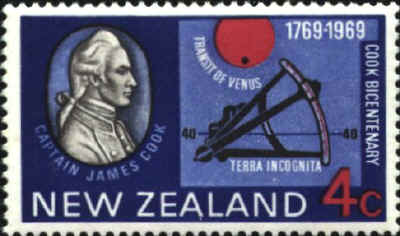
Cook
charted New Zealand and eastern Australia, and discovered the
Admiralty and Society Islands. He returned to England on June 12,
1771, passing through New Guinea, Java and the Cape of Good Hope. Cook
went on to lead two more voyages of discovery before his death in
1779.
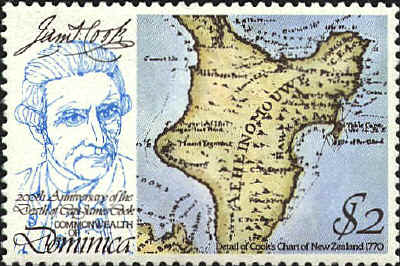




 |
